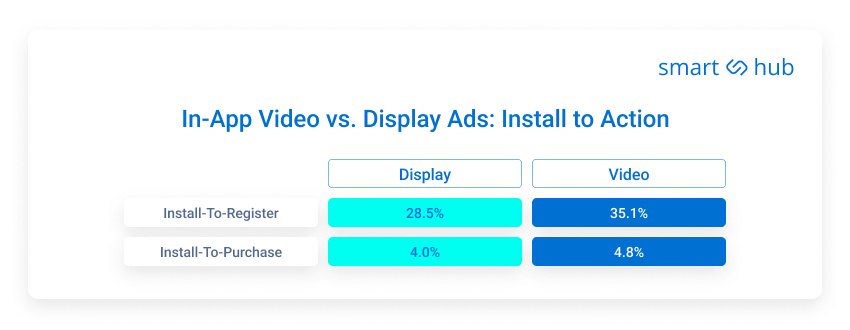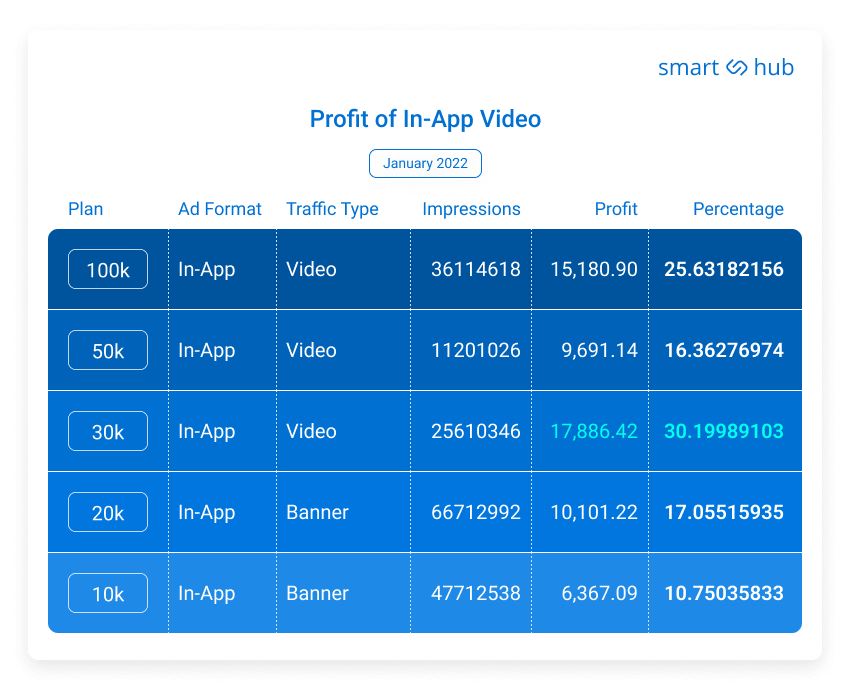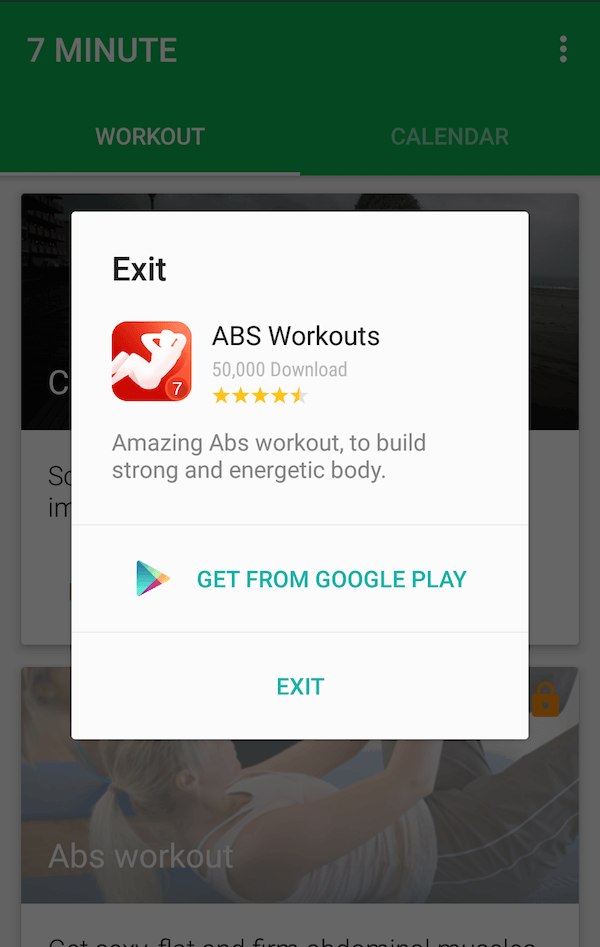Over the years, mobile advertising has undergone a remarkable transformation, evolving from small banners to captivating and immersive in-app video ads. The introduction of interactive mobile video advertising within mobile apps has revolutionized the advertising landscape. These video ads now incorporate a wealth of multimedia elements, even functioning as interactive game formats.
Gone are the days when in-app video ads would merely irritate users. Instead, they now offer a genuine value exchange. Users have come to realize that these video ads do not exist to spoil their app experience but rather to enhance it by extending the opportunities they receive from free apps.
When implemented effectively, video mobile advertising yields numerous benefits for all stakeholders involved – advertisers, app developers, and users alike. The popularity of this format stems from its ability to create a win-win situation. Let’s delve into the secrets behind its widespread acceptance and explore why incorporating such traffic into your marketplace is a prudent choice.
As per Statista’s findings, the global population of mobile phone users currently stands at a staggering 7.1 billion. However, this figure is projected to skyrocket, surpassing 7.4 billion by the year 2025.Interesting facts about mobile ads.
Mobile app usage reigns supreme in the realm of mobile usage, commanding a staggering 90% of total mobile phone time. This dominance clearly indicates the pivotal role that apps play in shaping our digital experiences on smartphones.
Within the 18-24 age group, a significant 66% of their digital media time is dedicated to smartphone apps, showcasing a remarkable preference for these dynamic platforms. In stark contrast, mobile web usage accounts for merely 7%, underlining the undeniable sway that mobile apps hold over the younger demographic’s digital experiences.
So, what is video mobile advertising? When we refer to video ads mobile, we mention all kinds of video ad units that can be served in the mobile ecosystem.
For starters, it is worth pointing out that video mobile ads can is served in two different ecosystems – in-app and mobile web. A mobile web ecosystem can support almost all of those online ad formats that are typically available on desktop (since mobile versions of the website are also served in the browsers). On the other hand, is in-app video advertising which is served inside of the apps (not in the mobile browsers), and hence requires a different approach to advertising. In practice, it means that such video ads could allow an additional layer of interactivity, some of the video formats work exclusively in the in-app environment. So, let’s review the most popular in-app video advertising and mobile web video formats. Read more about programmatic video advertising.
These full-screen video ads appear at natural transition points within an app, such as between levels or during content loading. They offer high visibility and can deliver immersive brand experiences.
What sets interstitial ads apart is their ability to command high visibility. By occupying the entire screen, these ads ensure that users cannot overlook the brand message being conveyed. This expansive canvas enables advertisers to create immersive brand experiences that leave a lasting impression. With creative storytelling, stunning visuals, and compelling narratives, interstitial ads have the potential to deeply resonate with users, fostering brand recall and affinity.
Playable video is like a mini version of a mobile game that appears as a part of the ad experience in the app with tappable video content. This way, the user has an opportunity to try the new game before installing it (the ad unit contains the game installation link that leads to the app store).
Playable video ads also benefit advertisers by ensuring that the audience engaging with the online ad is genuinely interested in the game’s genre and gameplay mechanics. This targeted approach results in higher conversion rates and more engaged users who are more likely to continue playing the game after installation.
Rewarded videos are also specifically suited for apps. These ads provide users with an opportunity to receive bonuses in exchange for ad watching (coins, extra points, access to in-game items, closed content, and specific functionality of the app). Because of such value exchange, over 70% of users give preference to the experience they obtain with rewarded video ads.
The success of rewarded videos lies in their ability to strike a delicate balance between user satisfaction and advertiser objectives. By offering users meaningful rewards that enhance their app experience, rewarded videos create a positive user perception of the ad content and the brand behind it. This positive association can lead to increased user loyalty, positive word-of-mouth, and ultimately, a boost in app monetization strategy for developers.
In-stream video is the closest format to TV commercials. The video is embedded in the player that shows the ads before (pre-roll), during (mid-roll), or after (post-roll) the content in the video player is streamed. The major advantage of these ads is that the advertiser can control the ability of the viewer to skip the video – immediately, or after five seconds after launch. As well, the videos can be made unskippable.
Out-stream video is a mobile app advertising video that is getting placed inside of a webpage’s content (for example, in the text of an article). Mobile-based video of this format plays automatically without sound (the sound is turned by the user when necessary). This format is considered less annoying as it does not interrupt the browsing experience on mobile sites.
The types of out-stream advertising include the following formats (according to IAB):
Video banner ads – the app advertisement video that is placed inside the ad banner, the video player occupies the entire area of the banner or part of it.
App video advertising obviously booming. While the mobile advertising market size is growing, now it accounts for approximately 11 billion U.S. dollars, it is also expected that it will reach 57.85 billion dollars by 2030. Such growth meanwhile will soon show a compound annual growth rate (CAGR) of over 18%. With this, video content is consumed by more than 90% of the population. The number of digital video viewers also increases along with advertisers that choose app video advertising as the most important promotional tool for their products or services.
The viewability of the in-app videos reached as high as 78% in the first half of 2021, which means that 78% of in-app video ads displayed during the period were seen by real people.
What about the cost then? Sure, video ads for mobile apps are more expensive than, let’s say, banner ads. However, the CTR that they generate as a result is also much higher than in banners (in fact, 7.5x higher). Thus, it could be right to say that banners cost less but also generate smaller click-through rates.
Naturally, app video ad appears to be more engaging for users because they can deliver the brand story, educate the users or provide them with in-game bonuses in exchange for ad watching. That is a secret sauce of their effectiveness and that’s why they also generate 7.5x higher engagement rates when compared to static display formats.
Post-install action rates are also elevated for video ads (with install-to-register rates of 35.1% compared to 28.5% for display ads). Install-to-purchase rates are 4.8% for video and 4% for display ads.

As we already found out, video ad app campaigns can be very beneficial when we talk about CTR, engagement, and other performance indicators. Let’s then review what you can achieve with in-app video advertising on SmartHub.
A lot of SmartHub owners achieved spectacular results from media trading in 2021-2022, so we decided to examine how they managed it. We discovered what traffic types and formats our clients used and which QPS plans their systems were operated on. We found out that while some platforms were focused solely on in-app banners, the others only focused on in-app mobile video advertising. Some clients who achieved success also combined both formats in their marketplace. Integrated partners, meanwhile, influence this focus the most, since some partners may require app traffic and others banner traffic.

To create a successful in-app ad, you need to spend a lot of effort planning it out, and know clearly which path to take to complete the task at hand. Here are the general steps you’ll need to take to launch such an ad.
1. Identify suitable ad placement opportunities within your app.
2. Choose a reputable ad network specialized in in-app video advertising.
3. Integrate the selected ad network into your app following their guidelines.
4. Design ad placements that seamlessly blend with your app’s interface and user experience.
5. Optimize ad loading and pre-caching for smooth playback.
6. Utilize targeting capabilities to deliver relevant video ads to specific user segments.
7. Monitor ad performance and optimize based on key metrics.
8. Offer clear value exchange to users, such as rewarded video ads.
9. Regularly update and refresh ad content to maintain user interest.
10. Continuously test, iterate, and stay informed about industry trends and best practices.
Optimal Ad Length: Keep video ads concise and engaging to retain user interest. Generally, short videos perform better, so aim for 15-30 seconds in length. Focus on delivering the key message and value proposition within that timeframe.
Reward-Based Ads: Consider implementing rewarded video ads that offer users incentives or bonuses in exchange for watching the ad. This value exchange increases user engagement and creates a positive perception of the ad experience.
Optimize Loading Times: Minimize ad loading times to ensure a seamless user experience. Implement pre-caching mechanisms to preload video ads in the background, reducing latency and ensuring smooth playback when triggered.
A/B Testing: Conduct regular A/B testing to experiment with different ad placements, formats, creatives, and targeting strategies. Analyze the performance metrics to identify the most effective combinations that drive higher engagement and app revenue.
User Feedback: Pay attention to user feedback and ratings related to the ad experience. Actively address any concerns or issues raised by users to improve the overall ad implementation and user satisfaction.
For avid Spotify users seeking respite from ads, a tantalizing option emerges, delivered through the power of audio persuasion. An enticing audio ad beckons, offering a proposition that unlocks thirty minutes of uninterrupted music with a simple trade: watch a single video ad. The allure lies in experiencing the benefits akin to a Spotify premium subscription, where the melodies flow without interruption, yet without requiring a financial commitment.

This harmonious exchange can be repeated at will, granting users the freedom to indulge in uninterrupted bliss time and time again. With this innovative offering, Spotify embraces a novel paradigm, granting users a taste of premium features while maintaining a harmonious equilibrium between artistry, ad engagement, and user satisfaction.
Abs Workout leverages a pop-up ad strategically displayed upon exiting a fitness app, targeting fitness enthusiasts.

The ad incorporates social proof, showcasing a high star rating and highlighting “50,000 Downloads.” The call-to-action, “Get From Google Play,” provides an effective alternative to the traditional “Install” prompt, emphasizing the importance of aligning the app store with the user’s device for a seamless installation experience. By considering user preferences and avoiding mismatches, Abs Workout enhances user engagement and encourages app installations.
Subway Surfers increases user engagement in the game with rewarded ads that allow players to earn in-game currency. Players can watch the promotional video, after which they will be able to buy more items in the in-game store.
This allows the creators of the game to benefit in two ways: engaging players and getting paid for displaying ads.

SmartHub white label ad exchange enables companies of different sizes and budgets with limited budgets to launch their own RTB marketplaces and enter the programmatic market ASAP (up to 7 days). Thanks to the rapid launch, companies can achieve payback and revenue growth much earlier than it is possible with platforms built from scratch. With a customer-first approach and pre-built technology, SmartHub empowers businesses to establish and maintain their ad exchange efficiently. Explore our guide about how to get started with programmatic advertising.
Our unique model involves proactive customer care and support from a dedicated team of experts who go the extra mile to ensure exceptional business outcomes. With attentive support, expert guidance, and cost-cutting innovative technology, SmartHub delivers a powerful combination that propels your business towards spectacular results.
Explore the case studies of SmartHub with detailed description of our partners` programmatic business journey and impressive results.
Mobile app video advertising is very advantageous in terms of profit generation, engagement, and CTR. In-app video advertising is a large growing segment that enables even more interactivity during the ad experience, that’s why it will steadily grow in the future. In-app traffic is turning into a gold mine for advertisers and that’s why SmartHub owners should not miss the opportunity to serve such ads in their marketplaces. In SmartHub video ad serving is operated by VAST (Video Ad Serving Template) which ensures that video ads are displayed on various online platforms and across various digital devices correctly. With this, partners that are connected by VAST can trade efficiently with other partners irrespective of their connection type. Read more about what is a VAST tag and how trading with VAST tags is happening on SmartHub.
Want to Learn More?
Want to Learn More?
We'll get back to you very soon.